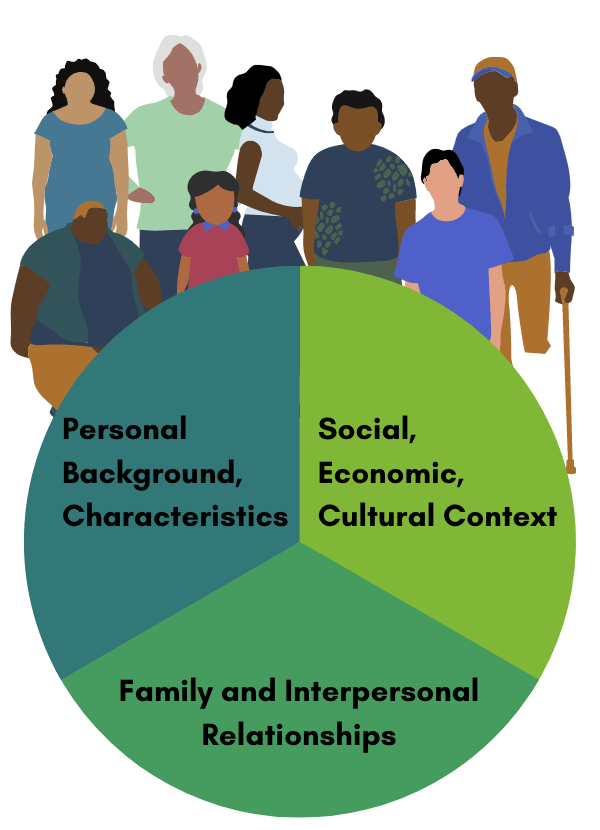What is Trafficking in Persons?
What is Trafficking in Persons?
At its core, trafficking in persons involves exploitation, which can take many forms, including sexual exploitation, forced labor, servitude, and even slavery.
Trafficking in persons – also referred to as human trafficking – is a serious crime.
Do you know someone who may be a victim of trafficking?
Costa Rica’s Trafficking in Persons Law
The Costa Rica Law Against Trafficking in Persons (Law 9095, Article 5) defines trafficking in persons as:
[…] using technology or any other means to employ threats, the use of force or other forms of coercion, abduction, fraud, deception, abuse of power, or to a situation of vulnerability, or to giving or receiving payments or benefits to obtain the consent of a person who has authority over another,
[…] to promote, facilitate, encourage, or engage in the recruitment, transfer, transport, harboring, hiding, retaining, delivery, or receipt of one or more people within or outside the country
[…] for the purpose of forced labor or services or other forms of labor exploitation, servitude, slavery or similar practices, servile or forced marriage, irregular adoption, forced begging, forced pregnancy and/or abortion, any type of sexual exploitation, or the unlawful removal of organs.
In legal terms, trafficking in persons involving adult victims is comprised of three main components: Act + Means + Purpose.
It is important to note that an adult victim’s consent to the intended exploitation or exploitation they have experienced is irrelevant where any means have been used.
Human Trafficking and Human Smuggling
An area of common confusion is the relationship between trafficking in persons and human smuggling. Human smuggling – also referred to as smuggling of migrants, migrant smuggling or people smuggling – is different from trafficking in persons. These terms are often mistakenly used interchangeably but they are not the same.
Human Trafficking
The key to defining trafficking in persons is the element of exploitation. Unlike human smuggling, trafficking in persons (human trafficking) does not requirement movement of any kind. Human trafficking does not require crossing a border and it can occur within the territory of one country. Human trafficking doesn’t require profit but generally involves exploitation of persons for profit. Human trafficking is a crime against a person.
Human Smuggling
Human smuggling is facilitating the illegal movement of a person across a border for the purpose of profit or other material benefit. Smuggling is a cross-border crime and cannot occur within the territory of one country. It is solely a transnational violation. Human smuggling is a crime against a country’s immigration laws.
Who Can Be a Trafficking Victim?
Anyone can be a victim of trafficking. They can
Be from Costa Rica or any other country
Live anywhere – whether in their own home, someone else’s home, on the street, or somewhere else
Live with anyone – family or relatives, friends, on their own, or with persons who are exploiting them
Commit crimes or be involved in illegal activities and still be victims of the crime of trafficking
Identify as a boy, girl, transgender or any other gender, LGTBQ+ or any other sexual identity or preference
Be with or without documents (identification, a passport, a visa)
A person is a trafficking victim based upon the experience of exploitation that they have been subjected to and regardless of whether or not they are formally identified and accredited as a trafficking victim by the authorities.
Being a trafficking victim does not depend on the trafficker or exploiter being identified, apprehended, prosecuted, or convicted. It also does not impact a trafficking victim’s status as a victim if they have a personal relationship with the alleged trafficker.
It is important to avoid misperceptions – sometimes fostered by media accounts – of who a trafficking victim is likely to be or what a trafficking victim is likely to look like. The range of trafficking victims is actually quite broad.
Vulnerability Factors

Within these categories, specific vulnerability and risk factors do exist. These may exist individually or in combinations in someone’s life.
It is difficult to identify generic risk factors for human trafficking as these are highly individual, situational, and contextual. And it is dangerous to overgeneralize as this may mean overlooking some factors that make certain individuals vulnerable.
Vulnerability or risk factors alone do not result in someone becoming a victim of trafficking.
Also, no vulnerability or risk factors need to exist or be identified for there to be a trafficking crime. Individuals without any identifiable heightened risk or vulnerability can still become trafficking victims.
Individuals become victims of trafficking because a perpetrator commits a crime against them. The criminals who commit these crimes often specifically target their victims and, in many cases, dedicate significant time and efforts to lure them into the trafficking exploitation that they subject them too.
Who Can Be a Trafficker?
Anyone can be a trafficker. Traffickers can be any age and any gender. They might be a stranger or someone the victim knows and trusts (for example, a family member, a friend or acquaintance, someone in the neighborhood or school, or a boyfriend or girlfriend). Traffickers might work alone or in a group.
A trafficker may contact a victim in person (for example, through friends, at school, in the community, at home or at social events). A trafficker may also contact a victim online (for example, through social media, email, or phone).
Do you know someone who may be a victim of trafficking?
Learn more about trafficking in persons on the Practitioner Platform

Developed by and © 2024 Warnath Group, LLC. All Rights Reserved.
The development of the IACT Learning Hub was funded through a cooperative agreement with the U.S. Department of State. The opinions, findings, and conclusions stated herein are those of the developers and do not necessarily reflect those of the U.S. Department of State.
Privacy Policy • Terms of Use • About the IACT Program